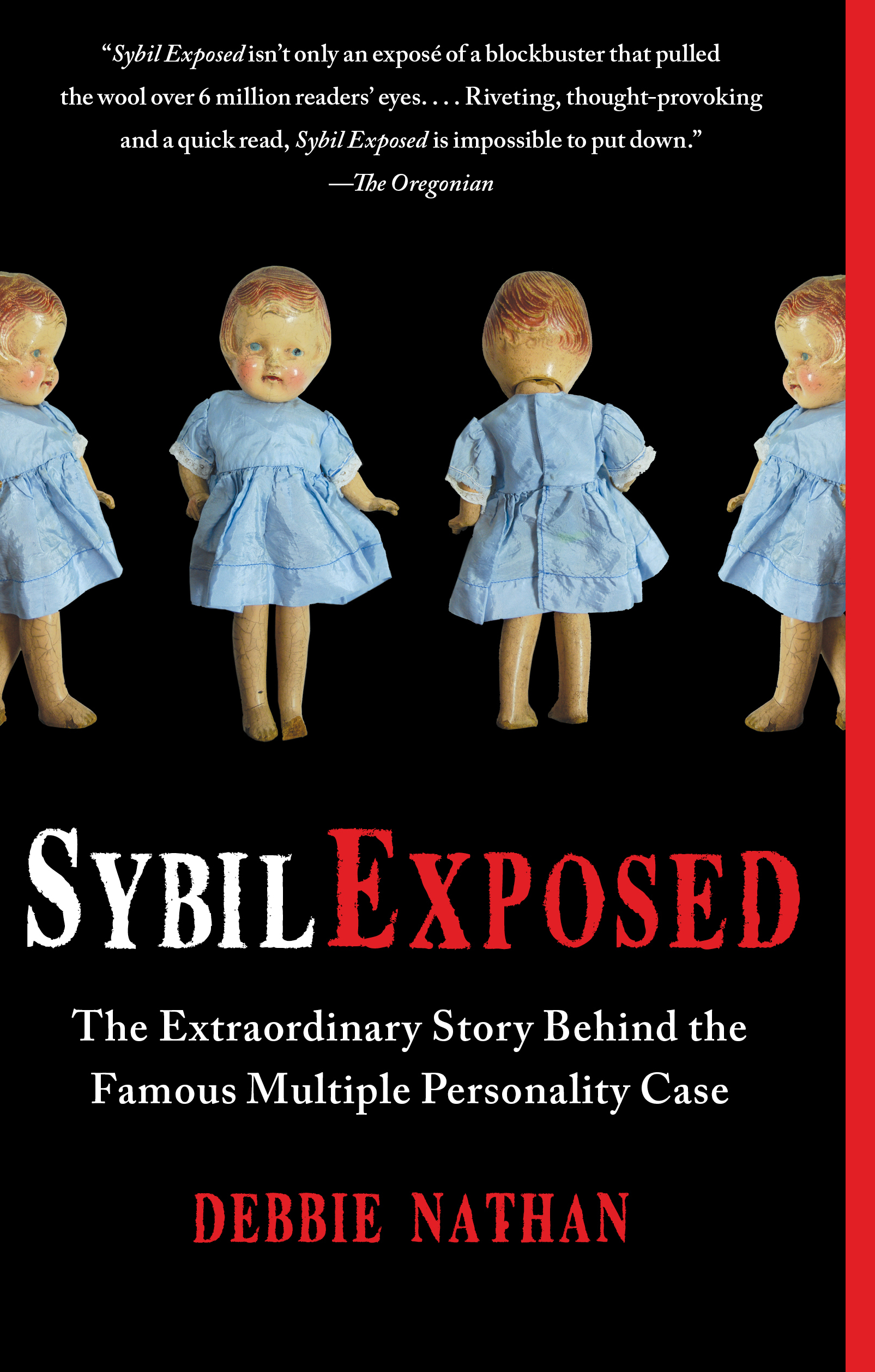The book Sybil Exposed by Debbie Nathan can be summed up in its subtitle, The Extraordinary Story Behind the Famous Multiple Personality Case. Sybil was the pseudonym for a woman that was claimed to have had 16 different personalities and whose claimed story was the subject of a 1973 book and a popular 1976 television movie, also called Sybil. This in-depth book though tells a very different story of what went on here. With two professionals, a psychiatrist, Dr. Cornelia B. Wilbur, and a journalist, Flora Rheta Schreiber, acting in a wildly unprofessional manner, and creating a narrative about this woman that appears to be largely a work of fiction.
When I say in-depth, I do mean that. The book goes provides a pretty detailed account of all three women’s lives and how they came to be intertwined. With both Dr. Wilbur and the author of the book, Flora Rheta Schreiber, having come of age pre-World War 2, when women had limited opportunities (and both of them gaining and then losing jobs as men left and came back from that war). That background might help to explain their later actions, but it is also interesting apart from the rest of the story told in the book.
When I say wildly unprofessional manner, take a look at this laundry list of medication that Dr. Wilbur was putting “Sybil” on:
To treat these problems, Connie wrote prescriptions for powerful, habit-forming drugs, many of which had just been patented in the 1950s and were being aggressively marketed by pharmaceutical companies. To help her sleep, Shirley got tablets of Seconal, a highly addictive barbiturate. Taking it regularly and then trying to withdraw can cause anxiety, vivid dreams, and even hallucinations. Connie treated Shirley’s menstrual pains with Demerol, an opiate related to heroin. It is extremely habit-forming, with side effects that include light-headedness, confusion, and blacking out. Shirley also got Edrisal and Daprisal for her monthly pain. Both combined aspirin with amphetamines – now commonly known as speed, which if taken excessively can cause hallucinations and paranoia. Edrisal and Daprisal eventually proved so addictive that they were yanked from the market. But they were readily available in the 1950s, along with the narcotics and barbiturates Connie prescribed. Soon Shirley was in her second semester at Teachers College, still managing to attend classes and complete her school work. But she spent her free time half zonked on mind-bending medications.
When Shirley felt particularly depressed or anxious, she frequently doubled, even quintupled, her prescribed dosages of Daprisal, Demerol, Dexamyl, Edrisal, Equanil, and Seconal. And Connie added Serpatilin, a combination of a tranquilizer and the stimulant Ritalin, as well as Thorazine, a medicine originally prescribed to relieve nausea and the kind of pain Shirley experienced with her periods. Thorazine would later be recognized as a potent antipsychotic whose side effects, particularly at high doses, include restlessness, confusion, blackouts, and unusual thoughts and behaviors. With this powerful drug and all the uppers and downers, Connie also gave Shirley Phenobarbital, another barbiturate, on top of her regular, intravenous doses of Pentothal.
Amazingly, that is just one piece of her actions with “Sybil” that seems inappropriate. That behavior may have been contagious:
As usual, her warmth got out of hand. That became apparent as she developed strange relationships with some of the medical residents. “Connie’s children,” is how they are remembered today by old-timers in the psychiatry department.
There were about eight of them, mostly men, and all became practicing psychiatrists. In the coming decades, half would be accused of having sex with their patients. Most of these would lose their licenses, temporarily or permanently. One, charged with having sex with teenaged boys, would shoot himself to death.
In setting up a telling of Flora Rheta Schreiber writing stories that likely were fictional, the mother of political consultant Dick Morris, Terry Morris, makes an appearance:
I have never permitted myself to become too fettered by the ‘facts’!” Morris cheerfully wrote in Prose by Professionals, a guidebook to magazine writing that she edited in 1961. “Frequently, I take considerable license with the facts that are given me and manipulate them, as a writer of fiction does.” Morris notified her interviewees in advance that she was making things up about them. Most approved, and when they heard Morris’s falsehoods from naïve fact checkers who phoned them to review the copy, they claimed everything was correct. NO editor was the wiser.
Morris spun whole stories from her imagination and populated them with pretend men and women. She called the results nonfiction.
That doesn’t say good things about where we are country has been for a long time.
As the book jacket says, what happened here “reads like fiction”, but unfortunately the actual events that occurred here had serious repercussions for many people.
Bottomline
A fascinating read, though quite depressing to read what happened here and what it says about humanity.


